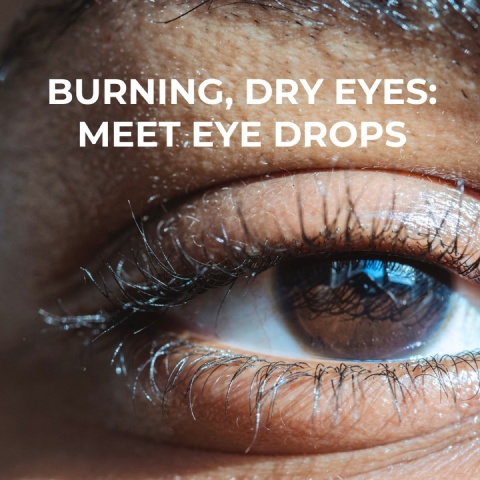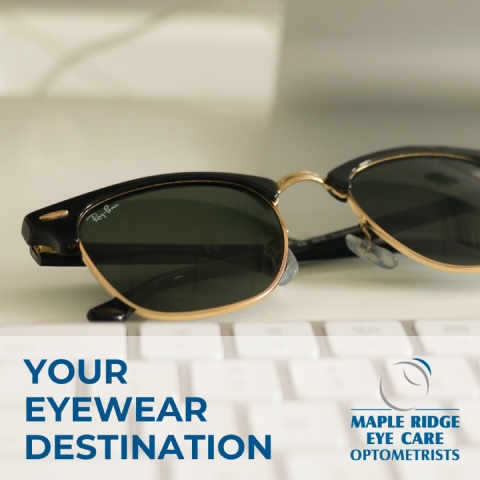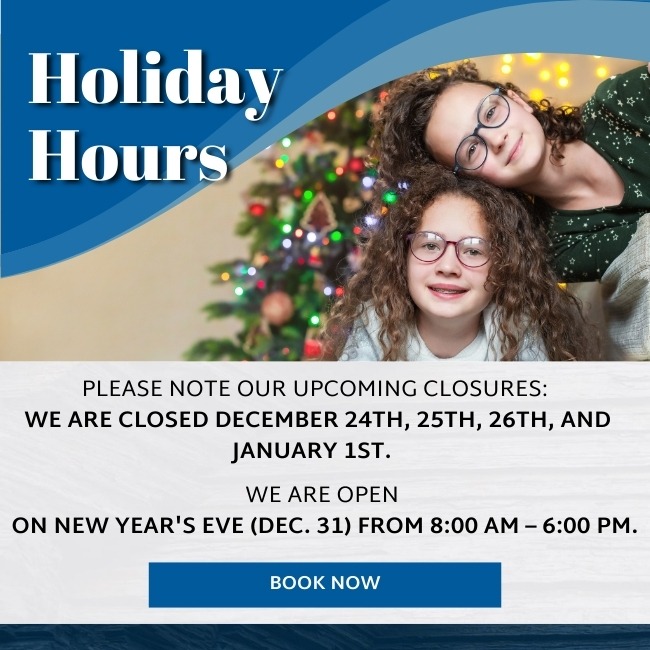Myopia Can Increase the Risk of Significant Eye Problems
Myopia, or nearsightedness, is a common refractive error that almost 30% of Canadians have. This condition typically develops in childhood and continues to worsen with age. Myopia tends to stabilize in adulthood, but your child may have to rely on heavier prescriptions due to myopia progression as they grow.
An early diagnosis can help protect your child’s vision, making regular eye exams essential for their ocular health. With help from our team at Maple Ridge Eye Care, we can help manage your child’s myopic progression. We offer several treatments in the form of eye drops, glasses, and contact lenses.
What Causes Myopia?
Someone with myopia has differently shaped eyes: the eyeball is too long, or the cornea has too steep of a curvature. The unique shape causes light to focus in front of the retina instead of on it, causing blurry vision.
Other factors may progress myopia development, such as:
What Is Myopia Progression?
Myopia typically develops in childhood, progressing with age. Your child’s eyes grow as they do, and this growth can cause myopia to become more severe. When someone has more than -6.00 diopters, they have high myopia.
High myopia requires heavy prescriptions to correct. Besides poor eyesight, high myopia increases your child’s risk of several eye conditions in adulthood, including:
Myopia Control Treatments
Depending on your child’s vision needs, many myopia control treatments exist. Glasses and contact lenses are common options, and eye drops are available if your child is not comfortable with glasses or contacts yet. We can recommend the treatment options that are most effective for your child’s unique needs.
Defocus Multiple Segment Spectacle Lenses
Glasses featuring defocus multiple segment (DIMS) technology, like MiyoSmart, help correct and control myopia. These lenses feature a central zone that corrects the refractive error, while many ring-shaped areas surround the central zone. The design of these lenses creates alternating focus and defocus areas for clear vision and management of myopic progression.
MiSight Daily Contact Lenses
MiSight lenses are for correcting and controlling myopia progression in children. These daily soft contact lenses are easy to use and feature peripheral defocus technology. MiSight lenses slow eyeball elongation and may reduce myopia progression by up to 59%.
Low-Dose Atropine
Low-dose atropine eye drops help relax the focusing mechanisms inside of the eye. These drops freeze the eye’s focusing muscles, helping slow myopia progression with minimal side effects. Atropine eye drops can slow myopic progression by almost 50%, but your child will likely still need to wear glasses or contact lenses throughout the day.
Orthokeratology (Ortho-K)
Orthokeratology lenses, or ortho-k, are specially designed lenses that temporarily reshape the cornea. Ortho-k lenses can slow myopic progression by up to 50% in 2 years.
Ortho-k lenses are worn overnight and removed in the morning. These lenses reshape the cornea as your child sleeps, allowing them to enjoy the day without the need for glasses or contacts.
Protect Your Child’s Vision
If your child has myopia, do not wait to have it treated. You can protect your child’s vision from a heavier prescription in adulthood.
Click here to enter our Myopia Management Portal, where you can find out more about myopia, treatment options and links to additional resources.
OUR LOCATION
Maple Ridge Eye Care is located on the corner of Dewdney Trunk Road and 230 Street, directly across from the Tim Hortons. Parking is available in the lot directly behind our practice. If you have any questions or are having trouble finding us, please give us a call!

Our Address
- 23015 Dewdney Trunk Road
- Maple Ridge, BC V2X 3K9
Contact Information
- Phone: 604-463-4469
- Email: mapleridgeeyecarestaff@gmail.com
Our Hours
- Monday: 9:00 AM – 6:00 PM
- Tuesday: 8:00 AM – 8:00 PM
- Wednesday: 8:00 AM – 8:00 PM
- Thursday: 8:00 AM – 8:00 PM
- Friday: 9:00 AM – 6:00 PM
- Saturday: 9:00 AM – 4:30 PM
- Sunday: Closed
OUR BRANDS






OUR GOOGLE REVIEWS & TESTIMONIALS
I have had a positive experience with the Macumira treatment. I started with the four treatments in two weeks and have had a treatment every three months since that time. I have had improvement in my vision, especially in my weak eye, going from 20/200 to 20/70 and at the last treatment 20/60. I am always checking to see how I see in low-light situations, and that varies. The techs are very helpful and the doctors follow the progress of the patients. At the age of 74, I want to extend my quality of vision as much as possible.
Tim F.
“Maple Ridge eye care is awesome! The doctors there are very professional and personable. They walked me through everything they were testing on my eyes and so I felt very comfortable. They have a great selection of frames as well. The frames I got were fabulous and I’ve received so many compliments on them! All and all a great experience and I would highly recommend to anyone.”
Shaina W.
“We had a great experience at Maple Ridge Eye Care! Dr. Matter was very knowledgable and personable. He took the time to answer all my questions and explain everything in terms I could understand. He was also great with my 3 year old son.”
Sharleen M.
“My wife and I have been going to Maple Ridge Eye Care for a number of years. We have since moved to Hope, BC and still continue to remain their patients. We have purchased many glasses from them over the years and have always received the best value for our dollar. Dr. Hurlburt and his staff have always provided the best and friendliest service, we would never trust anyone else with our eyes!”
Jeannette C.
“Although no longer a resident of Maple Ridge, I continue and will continue returning to Maple Ridge Eye Care for my eye care needs. The staff are the friendliest and most knowledgeable group I have had the pleasure of dealing with. The exams are very comprehensive and I feel confident that any and all eye sight issues (or related health issues) would be identified early and while they are treatable.”
Linda C.

OUR BLOG
Can Dry Eyes Cause Headaches?
Dry Eyes, Eye Conditions & HealthWhile dry eye may not directly cause headaches, the two conditions are thought to have common causes, so people who experience one are often more likely to also experience the other. […]
What Shape Eyeglasses for a Round Face?
EyeglassesThe key is to select frames with angular shapes—like square or rectangular—to add definition and contrast to the soft curves of your features. […]
Who Is a Good Candidate for MacuMira?
Eye Conditions & Health, MacuMiraIndividuals with a diagnosis of dry age-related macular degeneration, particularly in its early to intermediate stages, are often good candidates for MacuMira therapy. […]
Can Dry Eyes Cause Headaches?

While dry eye may not directly cause headaches, the two conditions are thought to have common causes, so people who experience one are often more likely to also experience the other. […]
What Shape Eyeglasses for a Round Face?

The key is to select frames with angular shapes—like square or rectangular—to add definition and contrast to the soft curves of your features. […]
Who Is a Good Candidate for MacuMira?

Individuals with a diagnosis of dry age-related macular degeneration, particularly in its early to intermediate stages, are often good candidates for MacuMira therapy. […]














